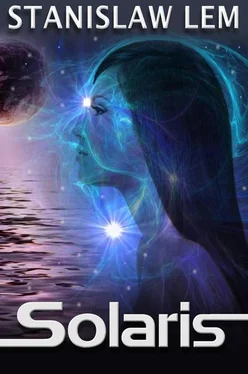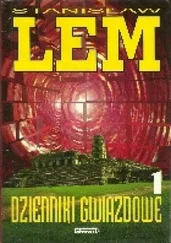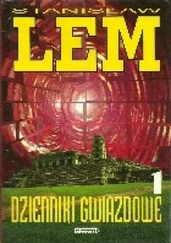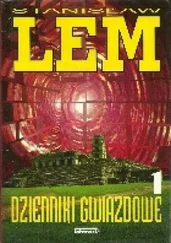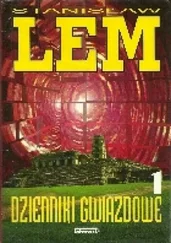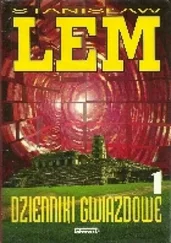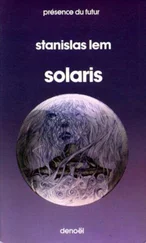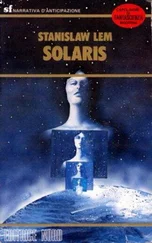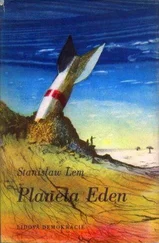These “Gravinsky periods,” which lasted over thirty years in all, were the naive youth, the impulsively optimistic romanticism, and finally the maturity of solaristics, marked by the first skeptical voices. By the end of the first twenty-five years there were already heard — as a return to the first colloidal-mechanistic theories — hypotheses that were their late offspring, concerning the non-mental state of Solaris’ ocean. The entire search for signs of a conscious will, for a teleology of processes, for activity motivated by the ocean’s inner needs, was almost universally acknowledged to have been an aberration on the part of a whole generation of researchers. A journalistic passion for refuting their assertions prepared the ground for the sober, analytically oriented work, concentrating on the assiduous gathering of facts, that was conducted by the group of Holden, Eonides, and Stoliwa; it was a time of the rapid increase in number and size of archives and microfilm collections, of expeditions lavishly equipped with every possible device Earth had to offer: automatic recording equipment, sensors, probes, you name it. In some years more than a thousand people took part in the research at the same time; but while the speed at which new material was amassed continued to grow, the spirit that moved the scientists was waning, and there began a period of decline, hard to pinpoint in time, for that still optimistic phase in the exploration of Solaris.
It was characterized above all by the great and courageous personalities — sometimes in theoretical imagination, sometimes in negation — of people such as Giese, Strobla, or Sevada; the last of these, who was also the last of the great solaricists, perished in mysterious circumstances in the vicinity of the planet’s south pole, having done something that even first-timers never would. Before the eyes of a hundred observers he flew his machine, which had been gliding low over the ocean, into the heart of a rapido which was clearly moving out of his way. There was talk of some kind of sudden incapacity, a loss of consciousness, or a rudder defect; in reality, I believe it was the first suicide — the first abrupt, overt explosion of despair.
But not the last. Gravinsky’s volume, however, did not include such information; I added dates, facts, and details from myself as I studied the yellowed pages and tiny print of his book.
In fact, those sorry attempts on one’s own life also came to a stop; nor were there any more of the great characters. The recruitment of scientists who are to devote themselves to a particular branch of planetology is itself an unstudied phenomenon. People of outstanding abilities and strength of character are born at more or less regular intervals, so it’s only the matter of their selection that is uneven. Their presence or absence in a particular field of inquiry can perhaps be explained by the perspectives it opens up. Whatever one thinks about the classic scholars of solaristics, no one can deny them greatness, often genius. The best mathematicians and physicists, the leading figures in biophysics, information theory, and electrophysiology, for decades were drawn to the silent giant of Solaris. All at once, from one year to the next the army of researchers was, as it were, deprived of its generals. There remained a gray, nameless mass of patient fact-gatherers, compilers, creators of experiments that were occasionally designed with originality; but there were no more mass expeditions on a global scale, or bold unifying theories.
Solaristics seemed to be falling apart, and as a kind of accompaniment or parallel to its descent there was a flurry of hypotheses, barely distinguishable from one another by second-order details, revolving around the degeneration, retardation, involution of the seas of Solaris. From time to time more daring and intriguing conceptualizations emerged, but they all seemed to pass judgment on the ocean, which came to be seen as the final stage of a development which long ago, thousands of years back, had had its period of supreme organization and now, having survived only physically, was disintegrating into a multitude of unnecessary, nonsensical agonal formations. So these were monumental, centuries-long death throes — that was how Solaris was perceived. Its extensors and mimoids were seen as tumorous growths; the processes that moved its huge fluid body were examined for indications of chaos and anarchy, to the point that this orientation became an obsession, and the entire scientific literature of the following seven or eight years, though of course free of expressions explicitly indicating the feelings of its authors, nevertheless was like one long barrage of insults — revenge taken by the gray leaderless masses of solaricists upon the unchangingly indifferent object of their intensified research, which continued to pay no attention to them whatsoever.
I was familiar with the work of a number of European psychologists wrongly, I think, excluded from this collection of classic Solariana, whose only connection with the field was that for a lengthy period they researched public opinion, collecting the most ordinary views, the attitudes of non-specialists, and in this way demonstrated the astonishingly close relationship between changes in such views and processes simultaneously taking place among the ranks of scholars.
Changes also occurred within the coordinating group of the Planetology Institute, where decisions were made concerning the material support provided for research. These changes resulted in a gradual but prolonged reduction in the budget of solaristic institutes and centers, and in grants for teams traveling to the planet.
Voices arguing for cutbacks in research mingled with speeches demanding more vigorous means; though no one may have gone further than the administrative director of the Worldwide Cosmology Institute, who stubbornly maintained that the living ocean wasn’t ignoring human beings, but rather it simply didn’t notice them, just as an elephant fails to see the ants crawling across its back; in order to call its attention to ourselves, then, what was needed were powerful stimuli and gigantic machines operating at the level of the entire planet. One amusing detail was the fact that, as the press mischievously pointed out, such costly measures were being demanded by the director of the Cosmology Institute, not the Institute of Planetology, which financed the exploration of Solaris; this, then, was generosity with someone else’s money.
Subsequently, the confusion of hypotheses, the reviving of old ones, the introduction of trivial changes rendering them more precise or, on the contrary, more ambiguous — all this began to turn the field of solaristics, which despite its breadth had been rather straightforward up to this point, into an ever more entangled labyrinth full of blind alleys. In an atmosphere of general indifference, stagnation, and discouragement, a second ocean of futile print seemed in time to be accompanying the ocean of Solaris.
About two years before I joined Gibarian’s workshop as a graduate of the Institute, the Mett-Irving Foundation was founded. It offered large prizes to anyone who found a way to utilize the energy of the oceanic plasma to the benefit of human beings. This had already been a temptation earlier, and spaceships had brought numerous consignments of plasma to Earth. Long and patient work had been carried out to find methods to conserve it, applying both high and low temperatures, an artificial micro-atmosphere and micro-climate resembling that of Solaris, preservative radiation, and a thousand chemical recipes, all of which merely allowed us to observe a more or less sluggish process of decay which, it goes without saying, like everything else was described multiple times in extreme detail in all its stages — autolysis, maceration, primary or early liquefaction, secondary or late liquefaction. A similar fate befell samples taken from the various productions and formations of the plasma. They differed from one another only in the path they took to the end, which constituted a watery fluid attenuated by auto-fermentation, light as ash and gleaming like metal. Its composition, proportion of elements, and chemical formulas could be given by any solaricist at the drop of a hat.
Читать дальше
